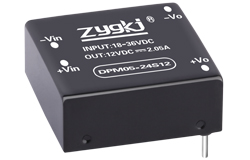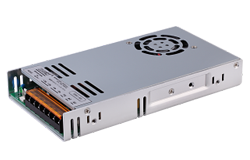nouvelles
Comment construire une alimentation AC-DC
Auteur: Module d'alimentation ZYG Time: 2023-4-24
Introduction
An AC-DC power supply is an essential component in many electronic devices, providing a constant and reliable source of power. These power supplies can be used in a wide range of applications, from powering small electronic devices like smartphones to larger appliances like refrigerators and air conditioners. Building one of these devices is a relatively simple process, and can be done with some basic knowledge of electronics and a few common components.
Step 1: Choose the Transformer
The first step in building an AC-DC power supply is to choose an appropriate transformer. The transformer will convert the AC voltage from the wall outlet into a lower voltage that can be used by the power supply. The voltage needed will depend on the specific device being powered, so it\’s important to choose a transformer that can provide the correct voltage.
Step 2: Choose the Diodes
Once the transformer has been selected, the next step is to choose the diodes that will be used to convert the AC voltage into DC voltage. Diodes are electronic components that allow current to flow in one direction only. In a bridge rectifier configuration, four diodes are used to convert the AC voltage into DC voltage.
Step 3: Add Filtering Capacitors
After the AC voltage has been converted into DC voltage, there may still be some residual AC current in the circuit. To filter out this current and provide a smooth DC output, filtering capacitors are used. These capacitors store charge and release it when the voltage drops, helping to smooth out the voltage fluctuations.

Step 4: Add Voltage Regulation
To ensure a stable and constant output voltage, a voltage regulator is used. This component monitors the output voltage and adjusts it as necessary to maintain a constant level. There are many different types of voltage regulators available, with different levels of accuracy and efficiency.
Step 5: Add Protection Circuits
Finally, it\’s important to add protection circuits to the power supply to prevent damage to the device being powered or to the power supply itself. This can include overvoltage protection, overcurrent protection, and short circuit protection, among others. These circuits monitor the output voltage and current, and can shut down the power supply if any problems are detected.
Conclusion
Building an AC-DC power supply is a relatively simple process that can be done with some basic knowledge of electronics and a few common components. By choosing an appropriate transformer, selecting the right diodes, adding filtering capacitors, using a voltage regulator, and incorporating protection circuits, you can build a reliable and efficient power supply for a wide range of applications. With a little bit of practice, you can even modify or customize the design to suit your specific needs.
Précédent: Building a 120 Volt AC Power Supply for 3 Volt DC Output
Prochain: AC-DC Power Supply: Efficient and Reliable Energy Conversion Solution
les informations pertinentes
-
2022-9-14
AC DC Power Module Filling Requirements Potting and sealing of AC DC power modules is very important. This process involves not only the protection of AC and DC power modules (waterproof, moisture-proof, dust-proof, anti-corrosion, etc.), but also the thermal design of AC and DC power modules. Power module potting materials are generally divided into three categories: epoxy resin, polyurethane, and silicone rubber Due to the hardness of epoxy resin, it cannot be used for stress-sensitive and module packaging and SMT components, so it is basically eliminated in module power supplies. But epoxy resins are also used in cost-critical micropower power supplies due to their low cost. Some domestic bad power supply manufacturers also use this epoxy resin for AC and...
Voir les détails -
2023-5-25
Power Up Your Car with an AC-DC Converter: A Game-Changer for On-the-Go Charging
Are you tired of your smartphone running out of battery while you're on the go? Do you often find yourself struggling to keep all of your devices charged while you're in your car? If so, an AC-DC converter could be just the solution you need. An AC-DC converter, also known as an inverter, is a small device that you can plug into your car's cigarette lighter socket to convert the DC power from your car's battery into AC power. This AC power can then be used to charge a wide range of devices, including smartphones, tablets, laptops, and even larger appliances like TVs and refrigerators. There are many benefits to using an AC-DC converter in your car. For one thing,...
Voir les détails -
2023-5-6
AC-DC Converter Module: Turning Alternating Current to Direct Current
An AC-DC converter module is an electrical device used to convert alternating current (AC) to direct current (DC). It is an essential component of many electronic devices, such as computers, televisions, and mobile phones. The module is also used in industrial settings, where it is used to power various equipment. The module works by taking the AC power supply and converting it into a DC output. This process involves several stages, including rectification, filtering, and regulation. Let's take a closer look at each of these stages. Rectification The first stage of the AC-DC converter module is rectification. In this stage, the AC supply is transformed into a pulsating DC voltage. This is done using a diode bridge, which consists of...
Voir les détails -
2023-5-13
Convertisseur AC-DC : Conversion du courant alternatif en courant continu
An AC-DC converter is an electronic device that is used to convert alternating current (AC) to direct current (DC). In today\'s world, most electronic devices operate on DC power, which is why AC-DC converters are so important. They are used in a wide variety of applications, from power supplies for computers and televisions to battery chargers for smartphones and tablets. The basic principle behind an AC-DC converter is to convert the AC input voltage into a DC output voltage. This is done using a rectifier circuit, which is made up of one or more diodes that allow current to flow in only one direction. The rectifier circuit converts the AC voltage into a pulsating DC voltage, which is not suitable...
Voir les détails -
2023-6-27
120V AC to 12V DC Converter: Transforming Voltage for Your Electrical Needs
When it comes to powering electrical devices, one of the most important considerations is voltage. Different devices operate at different voltage levels, and it's crucial to ensure that the voltage supplied is appropriate for the specific application. In some cases, it may be necessary to transform voltage to meet the needs of a particular device. This is where a 120V AC to 12V DC converter comes in. A 120V AC to 12V DC converter is a device that takes input from a standard 120V AC power outlet and transforms it into a lower voltage level of 12V DC. This is useful for a variety of applications, including powering devices like routers, modems, and other small electronics. It's also used in...
Voir les détails -
2023-6-19
Design and Analysis of a Bidirectional DC-DC Converter for Energy Storage Systems
Energy storage systems (ESS) have been gaining popularity in recent years due to the increased need for renewable energy integration and grid stabilization. One of the key components of an ESS is the bidirectional DC-DC converter, which is responsible for converting the DC voltage of the battery to the appropriate voltage level for the load or grid, and vice versa. In this article, we will discuss the design and analysis of a bidirectional DC-DC converter for energy storage systems. Design Considerations: The design of a bidirectional DC-DC converter for ESS involves several considerations. Some of the key design parameters are: 1. Power rating: The power rating of the converter should be chosen to match the power requirements of the load...
Voir les détails


















